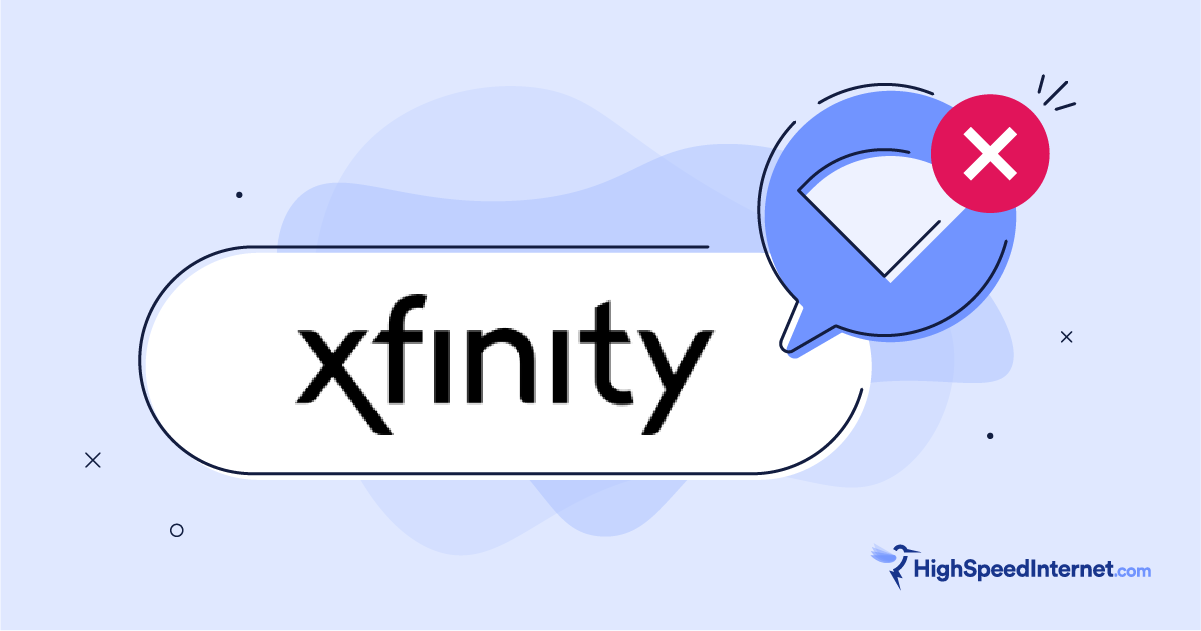How To Get Low-Income Internet Through Verizon
The Verizon Forward discount offers qualifying households some relief with the loss of the ACP
Aug 6, 2024 | Share
Brand Guides, How-To, Low-Income
The Affordable Connectivity Program (ACP) has run out of funding and is shutting down, causing millions of Americans to lose the discounts they’ve relied on to afford their internet bill. Fortunately, Verizon has responded with its own low-income program: Verizon Forward. When you combine Verizon Forward with the remaining government internet assistance program, Lifeline, you can get Verizon internet for as low as $20 per month.
Signing up for Verizon Forward is a little different from low-income programs from other ISPs, but don’t worry; we go over the steps in detail below.
Verizon Forward
| Program | Starting price | Speed | Details | Order online |
|---|---|---|---|---|
| Verizon Forward + Lifeline discount (new customers) | $0.00/mo.* for 6 mos. | 50–2,300Mbps (depending on plan) |
| View Plans for Verizon Home Internet |
| Verizon Forward + Lifeline discount | $20.00/mo.† | 50–2,300Mbps (depending on plan) |
| View Plans for Verizon Home Internet |
* For 6 months.
† Restrictions apply. Not available in all areas. Limited to residential customers meeting certain eligibility criteria. Subject to Internet Essentials program terms and conditions. Professional installation extra. Advertised price applies to a single outlet. Actual speeds vary and are not guaranteed.
Verizon Forward isn’t a specific internet plan but a discount program that can be applied to most Verizon internet plans. The eligibility requirements are similar to the ACP, requiring that you qualify for certain government assistance programs. The Verizon Forward discount comes in the form of a bill credit of up to $30 per month.
Although you may receive a discount on your services, everything else about your internet plan will be the same. Unfortunately, that means a possible credit check, installation fee, and equipment rental fees. You’ll need to factor these extra expenses in when choosing a plan to ensure you maintain your budget. See our Verizon Internet Review for more details on Verizon plans, policies, and details.
How to sign up for Verizon Forward
Step 1: Check your eligibility.
Verizon doesn’t have a direct way to guarantee eligibility for Verizon Forward before you apply, but the requirements are straightforward.
Step 2: Sign up for an eligible Verizon internet plan.
Before you can apply for the Verizon Forward credit, you need to have an eligible Verizon internet plan. See the Verizon plans table below to find an eligible plan that works for you.
Step 3: Navigate to Verizon Forward’s home page and click Get Started to apply.
Verizon Forward eligible programs
To get a Verizon Forward discount, you must either qualify for one of the following programs or have received a federal Pell Grant. You may need to supply supporting documentation, such as an eligibility letter.
Qualify for one of the following programs in the last 180 days:
- Lifeline (see Lifeline program requirements)
- Special Supplemental Nutrition Program for Women, Infants, and Children (WIC)
OR
- Have received a Federal Pell Grant in the last year
Verizon Forward eligible internet plans
| Program | Price before discount | Speed | Order online |
|---|---|---|---|
| Fios 300 Mbps | $49.99/mo. w/ Auto Pay | 300Mbps | View Plans for Verizon Home Internet |
| Fios 500 Mbps | $74.99/mo. w/ Auto Pay | 500Mbps | View Plans for Verizon Home Internet |
| Fios 1 Gig | $89.99/mo. w/ Auto Pay | Up to 940Mbps | View Plans for Verizon Home Internet |
| Fios 2 Gig | $109.99/mo. w/ Auto Pay | Up to 2,300Mbps | View Plans for Verizon Home Internet |
| 5G Home | $60.00/mo. w/ Auto Pay | Up to 300Mbps | View Plans for Verizon Home Internet |
| 5G Home Plus | $80.00/mo. w/ Auto Pay | Up to 1,000Mbps | View Plans for Verizon Home Internet |
| LTE Home | $60.00/mo. w/ Auto Pay | 50Mbps | View Plans for Verizon Home Internet |
| LTE Home Plus | $80.00/mo. w/ Auto Pay | 50Mbps | View Plans for Verizon Home Internet |
Alternatives to the ACP
You can increase your savings by pairing your Verizon Forward discount with the remaining government internet assistance program: Lifeline.
The Lifeline program works similarly to the ACP by providing qualifying consumers a discount on internet and phone service, but it has stricter eligibility requirements—not all ACP participants will qualify for Lifeline. However, if you qualified for the ACP through one of the programs below, you probably qualify for the Lifeline program:
- Supplemental Nutrition Assistance Program (SNAP)
- Supplemental Security Income (SSI)
- Veterans Pension and Survivors Benefits
- Federal Public Housing Assistance (FPHA)
- Medicaid
- Tribal Programs for Native Americans
Lifeline also offers benefits based on income, but the threshold for Lifeline is 135% of the federal poverty guideline, rather than the 200% needed for the ACP. To check your eligibility for the program, visit the Lifeline website.
Do you know what internet options are available to you?
Enter your zip code below to find out what providers have coverage where you live.
What happens when the ACP ends?
April was the last fully funded month of the ACP when those in the program received their full benefit. In May, participants will only receive a partial payment of $7–$16 toward their monthly internet bill, rather than the full $30. After May, no one in the program will receive any benefits unless Congress chooses to fund the program once again.
Once the program has ended, those on plans wholly covered by the ACP plan will lose internet service completely unless they opt-in to receiving undiscounted service from their provider. ACP customers can also opt-out of their internet service at the end of the ACP.
To avoid an interruption in service, you must do the following:
- Acknowledge receiving the disclosures about the ACP ending
- Consent to receive internet service without the ACP discount
- Pay your full bill for the upcoming month
You can also choose to switch to a different provider, or cancel your connection entirely, though we’d suggest looking into other free and low-cost options first.
Other providers with low-income programs
One of the reasons that the ACP worked so well is that the program was nearly universal—all major internet providers participated in the program and had an incentive to tailor their own plans to work better with the subsidy it provided. Many ISPs have stepped up to fill the gap left by the end of the ACP, but while their requirements and benefits are similar, there’s some important differences between these programs.
Here are some other internet providers with affordable internet plans and programs:
Do you know what internet providers offer service in your area?
Enter your information below to find the provider in your area that best meets your needs.
Additional Resources
If you’d like to learn more about low-income programs and other ways to find affordable internet, there are lots of other articles on HighSpeedInternet.com to help you learn about the topic.
- Government Programs To Make Internet Service More Affordable
- How To Get Free and Low-Cost Internet
- Best Internet Deals
- Best Internet Plans and Discounts for Seniors
- Best Internet Plans and Discounts for Students
- Best Internet for Veterans and Military Families
- Rural Internet Providers
- The End of the ACP
Author - Austin Aguirre
Austin worked as a broadband technician installing and troubleshooting countless home internet networks for some of the largest ISPs in the U.S. He became a freelance writer in 2020 specializing in software guides. After graduating with a BS in technical communication from Arizona State University, he joined the team at HighSpeedInternet.com where he focuses on home network improvement and troubleshooting.
Editor - Jessica Brooksby
Jessica loves bringing her passion for the written word and her love of tech into one space at HighSpeedInternet.com. She works with the team’s writers to revise strong, user-focused content so every reader can find the tech that works for them. Jessica has a bachelor’s degree in English from Utah Valley University and seven years of creative and editorial experience. Outside of work, she spends her time gaming, reading, painting, and buying an excessive amount of Legend of Zelda merchandise.




